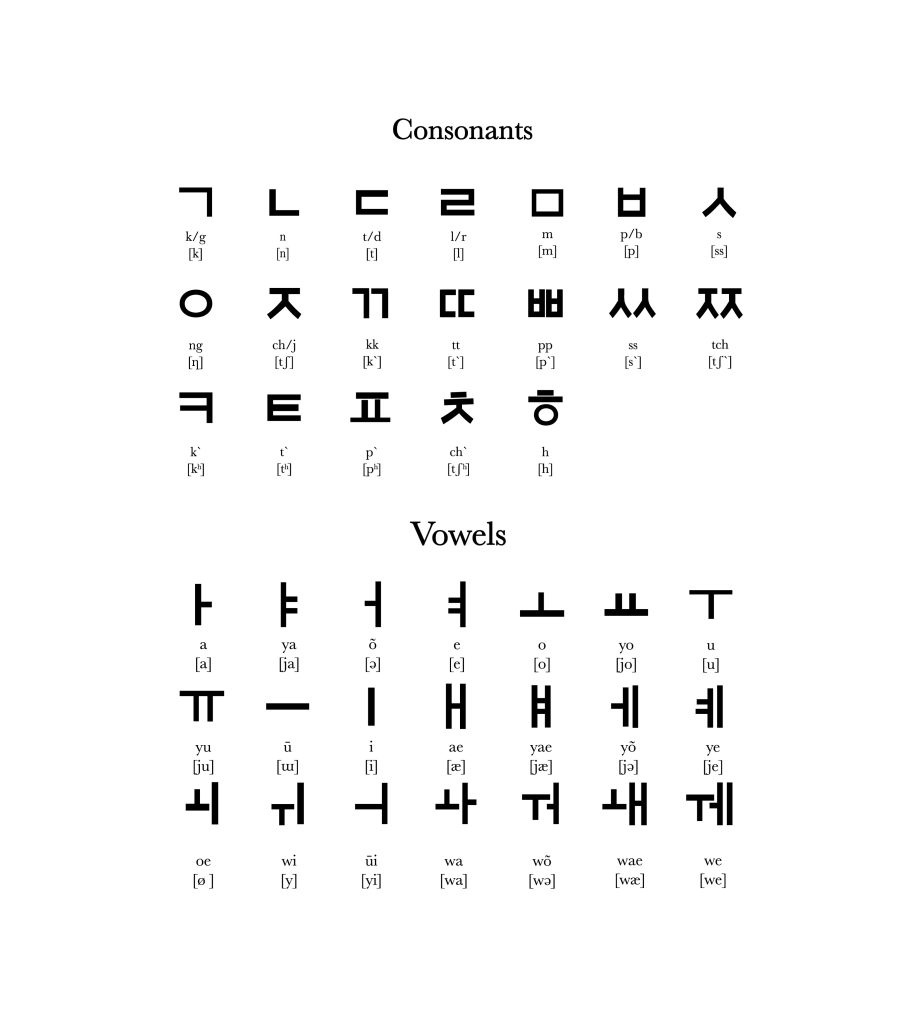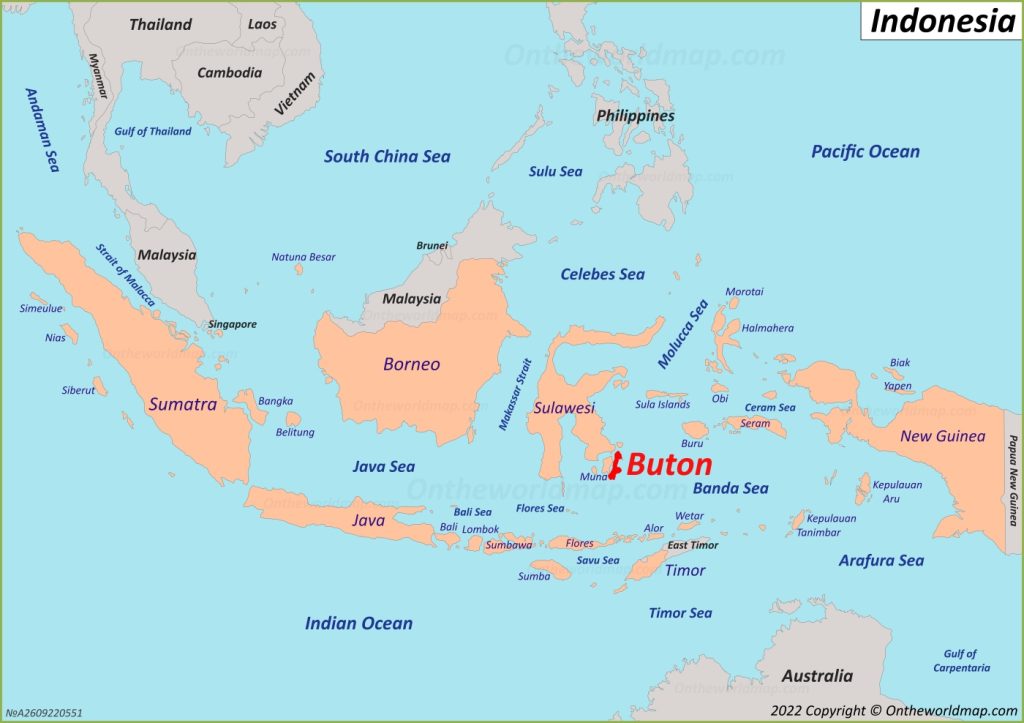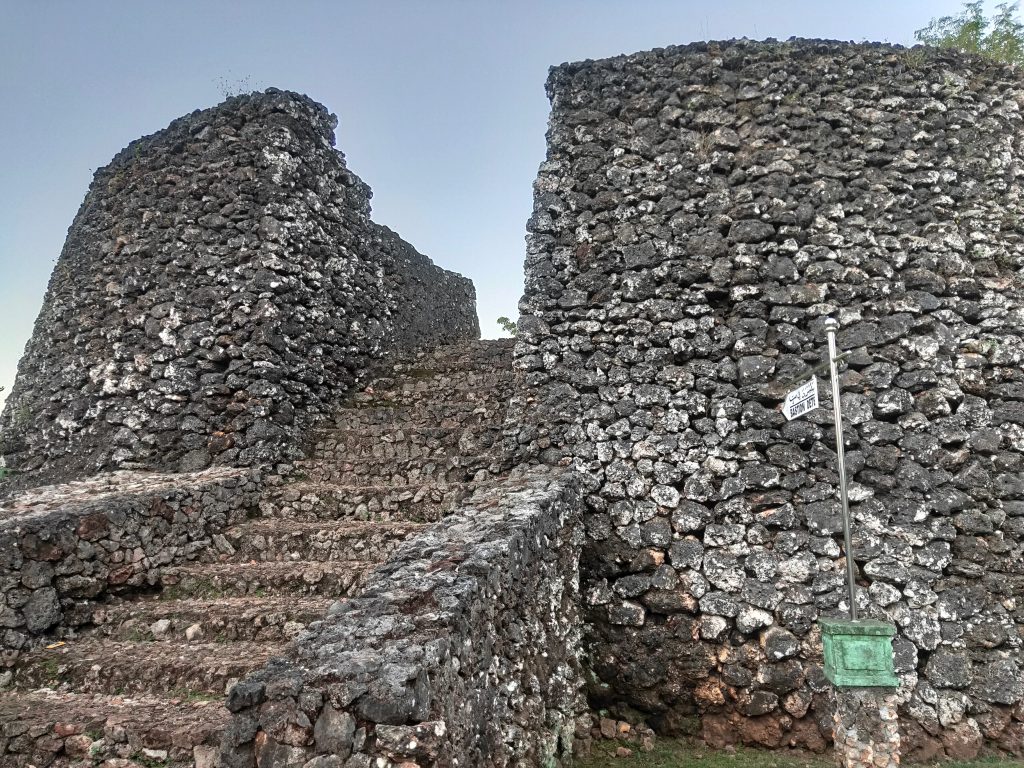I always thought that Korean was the only language that used the Hangul alphabet. However, this past month I have learned that such is not the case. The Hangul alphabet was created in 1444 during the reign of King Sejong, who was the fourth king of the Ju Joseon Dynasty. Previously Korea had been using the Chinese writing system, but King Sejong found issue with its complexity and the historical background of its use in Korea. For this reason, the Hunmin jeongeum (Translated to English: The correct sounds for the instruction of the people) also known as Eonmeun (“Vulgar script”) and Gukmeun (“National Writing”) was created. This eventually was renamed Hangeul or Hangul by Ju Si-gyeong, a Korean linguist (1876 – 1914).
This alphabet, also known as josoen guel in North Korea, was created with the intention of guiding the shape of the mouth based on the visuals of the letters and quickly spread in Korean schools and academic settings.

But Korean is not the language we are focusing on this month, it’s Cia-Cia.

Cia-Cia is a member of the Celebic branch of the Malayo-Polynesian language family, and it uses the Hangul alphabet. There are about 80,000 speakers of the language on Buton Island, which is to the south-east of Sualwesi. Cia-Cia is also known as Buton(ese) or Butung and has many different dialects, including: Kaesabu, Sampolawa, Wabula, and Masiri. The language itself is closely related to Wolio, which is spoken by many Cia-Cia speakers as well. This is because most speakers of the language live in and around the town of Bau-Bau on the southern tip of Buton, but there are also speakers on Binongko and the Batu Atas Islands. This indigenous language is considered endangered.
Originally, Cia-Cia was written with the Gundul script, which is a version of the Arabic script with five additional consonants and no written vowels. While the year is unknown, Cia-Cia did switch to the Latin or Roman alphabet. There was an initiative proposed by Professor Chun Tai-hyun in 2007 to officially switch the writing system from Latin to Hangul. In 2008 Hangul started to be taught as a writing system for the language to students in Bau-Bau. They used a textbook written by Lee Ho-young, a linguistics professor at Seoul National University. This initiative has since been abandoned by the government in 2012 in order to preserve national unity through the Latin alphabet. Yet the spread of Hangul has continued in the Cia-Cia communities. Signs are written in either both writing systems or just in Hangul, and the first Hangul-only dictionary of the Cia-Cia language was published in December of 2021 (The Korea Herald).

It is believed by those who use the Hangul alphabet that the sounds associated with the letters do a better job of representing the sounds of the spoken language, and many people prefer it as a sign of language independence from the more widely-spoken official languages in the area. It is used in revitalization efforts by locals and linguists alike.
Listen to examples of it here:
Read more about Cia-Cia here:
“Butonese – Orientation.” Orientation – Butonese, www.everyculture.com/East-Southeast-Asia/Butonese-Orientation.html. Accessed 19 Nov. 2024.
“CIA-CIA (Bahasa CIACIA / 바하사 찌아찌아).” Cia-Cia Language and Alphabet, 6 Oct. 2024, omniglot.com/writing/ciacia.htm.
“Korean (한국어 / 조선말).” Korean Language and Alphabet, www.omniglot.com/writing/korean.htm. Accessed 19 Nov. 2024.
So-hyun, Kim. “[Hello Hangeul] Sharing the Korean Alphabet with the World.” The Korea Herald, The Korea Herald, 2 Apr. 2023, www.koreaherald.com/view.php?ud=20230402000150.

